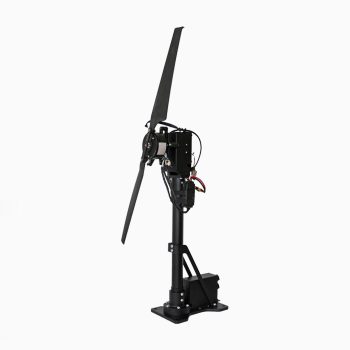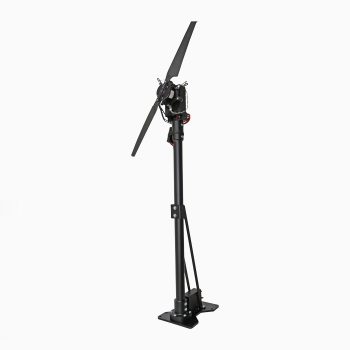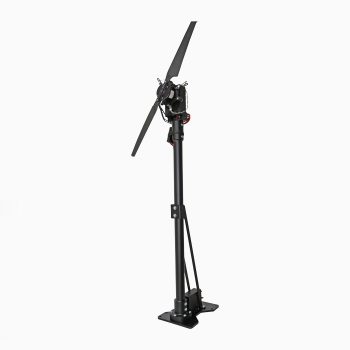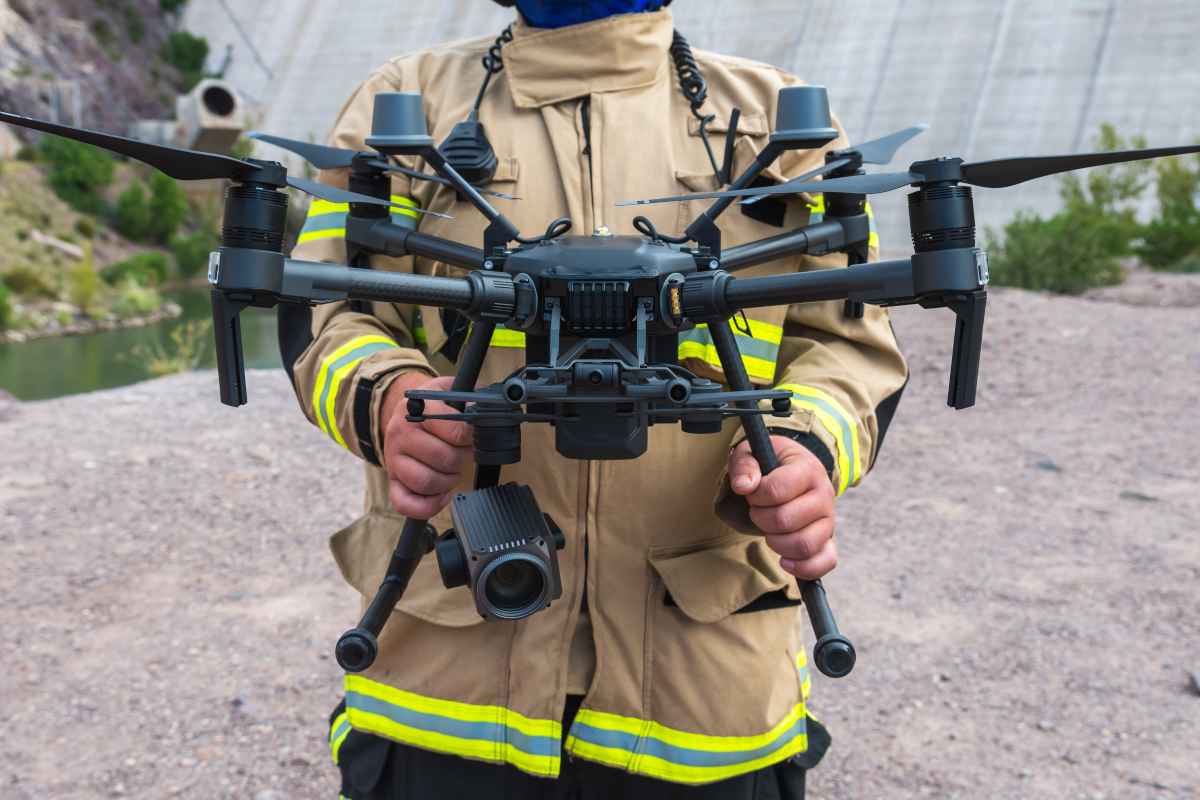What is Propulsion System Safety and Why is it Important in Aviation?
Propulsion system safety in aviation refers to the measures taken to ensure that the aircraft’s engines and propulsion system are operating safely and reliably. This includes regular inspections, maintenance, and testing of propulsion system components to identify and correct issues before they can lead to accidents or incidents.
Propulsion system safety is critical in aviation because engine failures or malfunctions can have catastrophic consequences, leading to accidents, injuries, or even fatalities. A malfunctioning engine can also result in the loss of control of the aircraft, which can be extremely dangerous, particularly during takeoff and landing.
To ensure propulsion system safety in aviation, aircraft manufacturers and regulatory authorities have developed strict guidelines and regulations for the design, operation, and maintenance of aircraft engines and propulsion systems. These guidelines cover everything from inspection intervals to testing requirements and help ensure that the aircraft is operating safely and efficiently.
Pilots and maintenance personnel must also be trained to recognize and respond to any propulsion system issues, including engine malfunctions or failures. This training includes identifying warning signs, responding to emergencies, and following established procedures to ensure the safety of the aircraft and its passengers.
Overall, propulsion system safety is critical in aviation to ensure that the aircraft operates safely and efficiently, minimizing the risk of accidents and incidents. Regular inspections and maintenance, as well as the training of pilots and maintenance personnel, play a vital role in maintaining propulsion system safety and ensuring the safe operation of aircraft.
What are the Potential Hazards of Propulsion Systems and How Can They be Mitigated?
Propulsion systems can pose several potential hazards, which can vary depending on the type of system and the application. Some common hazards associated with propulsion systems include:
- Fire and explosion: Fuel leaks, combustion failures, or other malfunctions can result in fires or explosions that can be hazardous to personnel and equipment.
- Mechanical failure: Propulsion system components, such as bearings or gears, can fail due to wear, damage, or other factors, leading to equipment damage or injury to personnel.
- Toxic fumes: Exhaust gases from combustion engines can contain toxic fumes, which can be hazardous to personnel in the area.
- Noise pollution: High levels of noise generated by propulsion systems can lead to hearing damage for personnel who are regularly exposed.
To mitigate these hazards, various measures can be taken, including:
- Regular maintenance: Regular maintenance and inspection of propulsion systems can help identify and correct issues before they lead to accidents or incidents.
- Use of protective equipment: Personnel should use appropriate protective equipment, such as gloves, eye protection, and ear protection, to minimize the risk of injury or exposure to hazardous materials.
- Proper installation and operation: Propulsion systems should be installed and operated according to manufacturer guidelines and regulatory requirements to ensure safe and reliable operation.
- Hazardous material control: Proper handling and disposal of hazardous materials, such as fuel and lubricants, can reduce the risk of fire or environmental damage.
- Noise control: Use of noise-reducing equipment and sound-absorbing materials can help minimize noise pollution from propulsion systems.
- Training: Proper training of personnel who operate and maintain propulsion systems can help them recognize and respond appropriately to potential hazards.
Overall, the potential hazards of propulsion systems can be mitigated by taking appropriate measures to maintain and operate systems safely, use protective equipment, and properly handle hazardous materials. Regular inspections, training, and adherence to manufacturer guidelines and regulatory requirements can also help ensure the safe operation of propulsion systems.
What are the Pre-flight Safety Checks Required for Propulsion Systems?
Pre-flight safety checks for propulsion systems involve a series of procedures to ensure that the propulsion system is functioning correctly and safely before the aircraft takes off. Here are some of the pre-flight safety checks required for propulsion systems:
- Fuel check: Verify that there is sufficient fuel for the flight, and check for any signs of fuel leaks or contamination.
- Oil check: Check the oil level and look for any signs of oil leaks or contamination.
- Visual inspection: Conduct a visual inspection of the propulsion system components to identify any signs of damage, wear, or loose components.
- Electrical system check: Verify that the electrical system is functioning correctly, including the battery, alternator, and starter.
- Propeller check: Inspect the propeller for any signs of damage or wear, and ensure that it is securely attached to the engine.
- Cooling system check: Verify that the cooling system is functioning correctly and that there are no leaks or obstructions.
- Exhaust system check: Verify that the exhaust system is functioning correctly, and there are no leaks or blockages.
- Ignition system check: Verify that the ignition system is functioning correctly and that there are no issues with the spark plugs or other ignition components.
- Throttle and carburetor check: Verify that the throttle and carburetor are functioning correctly and that there are no issues with the fuel system.
Overall, pre-flight safety checks for propulsion systems are critical to ensure that the aircraft is safe to fly and that there are no issues with the propulsion system that could affect the flight. It is essential to conduct these checks thoroughly and regularly, following manufacturer guidelines and regulatory requirements, to ensure the safe operation of the aircraft.
Why is Proper Maintenance Important for Ensuring Propulsion System Safety?
- Proper maintenance is crucial for ensuring propulsion system safety for several reasons:
- Early Detection of Issues: Regular maintenance and inspections of the propulsion system can help identify and detect issues before they become serious problems. This allows for timely repairs, reducing the likelihood of failures that could lead to accidents or incidents.
- Reliable Performance: A well-maintained propulsion system is more likely to operate reliably and efficiently, reducing the risk of malfunctions that could cause accidents or incidents.
- Extending the Lifespan of the Propulsion System: Regular maintenance can extend the lifespan of propulsion system components, reducing the need for costly repairs or replacements.
- Compliance with Regulations: Proper maintenance ensures that the propulsion system meets regulatory requirements, reducing the risk of fines or other penalties for non-compliance.
- Improved Resale Value: A well-maintained propulsion system can improve the resale value of the aircraft, making it easier to sell and potentially increasing the selling price.
- Safety of Passengers and Crew: The most important reason for proper maintenance of the propulsion system is to ensure the safety of passengers and crew. Malfunctions or failures of the propulsion system can result in accidents or incidents that could cause injury or fatalities.
Overall, proper maintenance of the propulsion system is essential for ensuring the safe and efficient operation of the aircraft. Regular inspections, timely repairs, and adherence to manufacturer guidelines and regulatory requirements can help ensure the safe operation of the aircraft, reducing the risk of accidents or incidents that could cause injury or fatalities.





